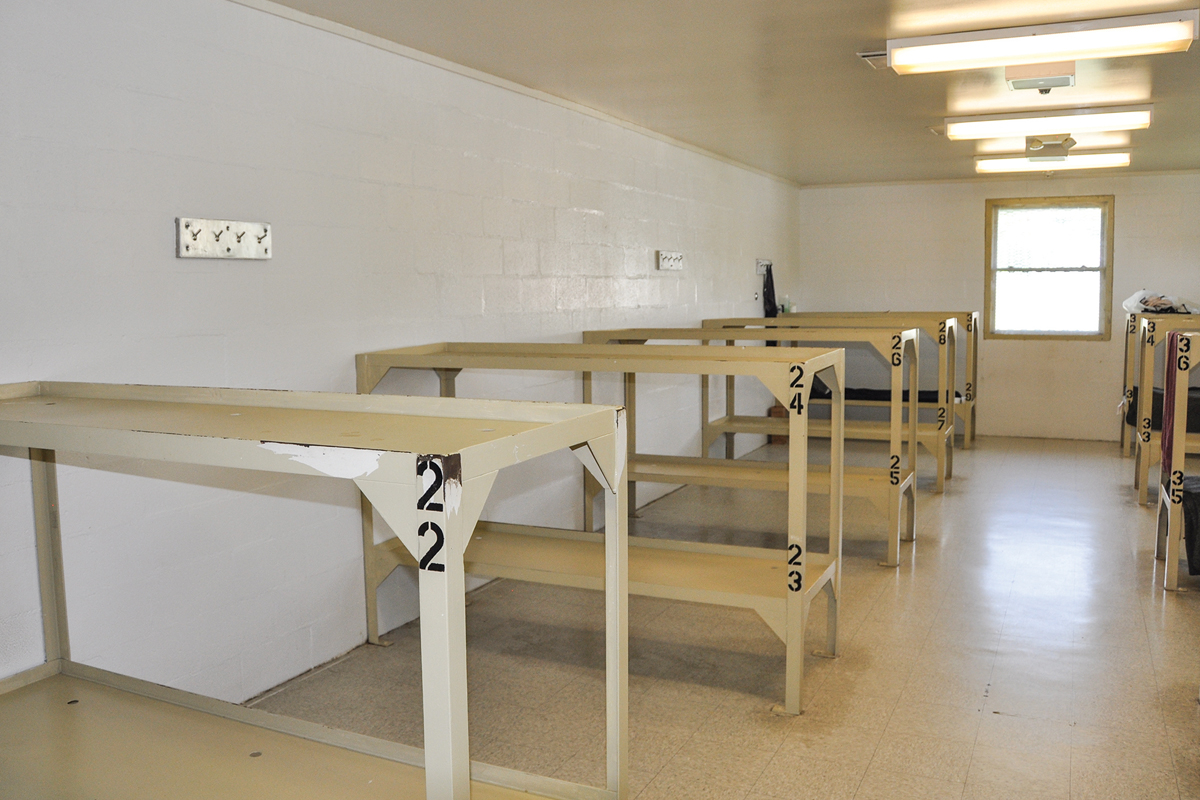Considerable apprehension haunts Haywood jail expansion project
 Haywood County's jail expansion project has been under discussion since before the Coronavirus Pandemic. File photo
Haywood County's jail expansion project has been under discussion since before the Coronavirus Pandemic. File photo
With several critical deadlines approaching and the cost of construction only going up, Haywood County commissioners spent more than two hours on Feb. 26 meeting with administrators, architects, builders and sheriff’s office personnel — going over every detail of the long-suffering jail expansion project, its growing price tag and its ultimate future.
The project has come a long way since it was first formally conceived more than four years ago, after jail capacity concerns had arisen in years prior.
Early opposition to the expansion eventually faded, and although there are lingering pockets of dissent, the necessity of the project has become a foregone conclusion among most.
There are two reasons for that: the present and the future.
Right now, the maximum capacity at the jail is 109 inmates, but that doesn’t tell the whole story. Operational capacity is defined as 80% of maximum capacity; beyond that, the sheriff’s office loses some flexibility to isolate inmates who may be a danger to themselves, to other inmates or to staff.
“That creates additional liability for us,” said Bill Wilke, Haywood’s sheriff.
Related Items
The concern about liability is real, and can create huge problems for inmates, jailers and taxpayers. In 2021, Jackson County paid a $725,000 wrongful death settlement after a Sylva woman became the third jail suicide in five years.
Chief Deputy Matthew Trantham pointed out that since 2013, jail deaths in North Carolina have tripled.
Then, there’s the concern that when the sheriff’s office does what Wilke calls a “round-up,” sweeping through the county to serve warrants, there may not be enough space at the jail to absorb an influx of inmates. Ditto for Canton, Maggie Valley and Waynesville — if there’s an unexpected mass disturbance, the county jail could become dangerously full, quickly.
Down the road, the county’s natural population increase — even without accounting for more rapid growth the county seems to be experiencing — shoots down arguments that the jail isn’t needed.
“We’ve been talking about this [expansion] for over 10 years, so if somebody’s making that comment, they’re just plain wrong,” said Commission Chairman Kevin Ensley.
Bolstering the jail argument is the fact that statistically, Haywood County has the fourth-fewest jail beds per 10,000 residents out of 16 similarly sized North Carolina counties. Only Pender, Chatham and Carteret have fewer than Haywood’s 17.4. In Western North Carolina, only Graham and Jackson have fewer beds per 10,000 residents than Haywood does.
Commissioner Tommy Long said he’d spoken with two previous sheriffs, Tom Alexander and Greg Christopher, and that both agreed the expansion remains as much a necessity now as when they were in office.
The project’s price tag, however, has given commissioners pause and forced them to justify — to themselves and to taxpayers — the project and the accompanying decades of debt service that will be required to complete it.
When the project was first proposed, it was thought that it could be completed for maybe $17 million. But that was before COVID, inflation and supply chain issues arose in earnest. Now, the county has explored plans to borrow an amount not to exceed $27.5 million.
Although Haywood County’s debt is currently the lowest it’s been in recent memory, that’s still a substantial amount of money in the context of a $125 million budget, and commissioners have openly discussed a 1.5-cent property tax increase to help pay for the project.
Operating costs remain a mystery as well. Clear numbers weren’t presented during the workshop and have yet to be offered. Wilke has maintained that staff for the expansion, which will more than double the beds in the jail and serve the county until roughly 2045, will be phased in over time.
Commissioner Jennifer Best was concerned about that unused capacity lingering long into the future. Wilke mentioned that although he wasn’t advocating for a jail that would serve other counties, Haywood County could derive some revenue from housing prisoners coming from other jurisdictions where jails are full.
Questions about utility and insurance bills also linger, as do questions about whether the relatively manageable current conditions at the jail are a fluke or will perhaps persist.
On the day of the workshop, the jail population was 83, according to Wilke. Trantham said the jail hadn’t had to transfer a prisoner because of capacity issues in a year.
Jail populations tend to decrease in winter and increase in summer. And, as Haywood County grows, its already older-than-average retiree population will only get older — not exactly the type of folks to commit youthful indiscretions that land them in jail. Wilke pivoted, saying that while older and wealthier retirees may commit crimes at lower rates than younger, less affluent people, those older wealthier retirees can instead become targets for criminal activity.
Long, who is active in the North Carolina Association of County Commissioners, said a recent presentation by Chief Justice of the North Carolina Supreme Court Paul Newby suggested that the state’s court system had become more efficient at administering justice, thus reducing jail stays especially for people awaiting trial. Wilke said courts appear to be operating “somewhat” more efficiently.
Wilke also said the county’s recovery court program, which demands accountability from those charged with drug crimes, won’t have much of an impact on jail populations because there are currently only five people enrolled.
Wilke’s tough public stance against drug trafficking — with several high-profile busts since he took office in late 2022 — may be scaring dealers off from doing business in Haywood County, thus reducing the jail population, but that’s impossible to verify and certainly not something the county can bank on long-term when assessing jail capacity.
Throughout the workshop, commissioners explored ways to cut costs, but the nature of the project and the current economic climate make that a heavy lift.
Jason Hopkins, of Moseley Architects, told commissioners that reducing the size of the expansion wouldn’t equate to an equivalent reduction in cost — meaning that cutting the number of new beds by half would not cut the price tag by half.
And, creating a scaled-down version of the expansion would essentially handcuff future commissioners from ever expanding on the site, which is already tight.
Another option is for the county to fund a study similar to the one released in 2020, just to double-check the projections and assumptions contained therein.
However, that would take time and money, and if a different conclusion arose — necessitating a redesign — that would reset the clock on design, permitting and financing processes initiated years ago. During that redesign time frame, if cost escalations continue the county could end up paying the same amount of money for a smaller project, or even more money for the current design.
“If we don’t build it big enough, people will be mad,” said Commissioner Brandon Rogers. “If we build it too big and only use half … either way, we’re going to have egg on our face.”
Commissioners will meet on March 4 to consider a final resolution to move forward on the project, after which the county will attempt to secure financing. Vannoy Construction, the contractor on the project, needs to know one way or the other by March 20.













